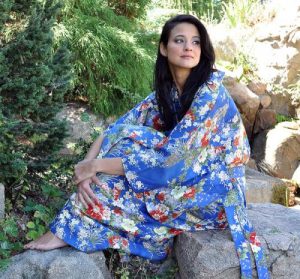Shopping for kimonos can be a great way to explore Japanese culture and fashion. While kimonos may look quite similar, each one has its own unique features that vary based on who wears it. For men, kimono designs are subtle with subdued colors and patterns. Sometimes they are accompanied by a jacket and hakama pants.
Women’s kimonos also differ according to their age and where the kimono is worn. For instance, furisode kimonos are often selected for special events like Coming of Age ceremonies. Tomosode kimonos feature more subtle designs and family crests. On the other hand, houmongi kimonos are typically worn when making social visits or attending parties. Visiting a kimono shop is an enjoyable way to appreciate this traditional garb in all its varied forms.
Kimonos come in a wide range of fabrics, from ultra-luxurious silk kimonos to humble hemp kimonos. The most versatile are cotton kimonos and machine-washable polyester kimono blends. Silk kimonos are very formal. They are ordinarily reserved for special occasions like tea ceremonies, weddings, and funerals. On the other hand, yukata or cotton kimonos are more suited for the warmer months of the year. In fact, many men and women wear them to matsuris or summer festivals. Cotton kimonos tend to be more affordable than silk kimonos due to lower production and fabric costs.
Kimonos and yukatas are beautiful traditional Japanese garments. Each kimono is made up of eight rectangular strips cut from a single bolt of cloth, with enough material to wrap around your body. The length is hemmed. The robe is held in place with an obi, sash, or belt. It’s important to keep the kimono folded on the right side when wearing it. If folded left over right across your body, you’ll be representing the deceased for a funeral. With the proper knowledge, kimonos, and yukatas are an amazing way to add cultural flair.
Kimonos and kimono yukatas are much more than unique, exquisite pieces of clothing. They are wearable works of art. Each kimono is specially designed to represent a particular season or special occasion. For example, kimonos created for colder months typically feature heavier fabrics. Silk decorated with motifs of cherry blossom and maple leaves to reflect the changing climate are popular. Conversely, kimonos created for summer months tend to be made out of lighter fabrics. Cotton is frequently used with seasonal images like dragonflies and flowers. By wearing kimono yukatas, one can appreciate how fashion is designed to continuously reflect the beauty of nature.
When cared for properly, kimonos can last a long time. In Japan, even across three generations. Kimonos are often decorated with kamon or the family crest, making them the perfect gift to pass from mother to daughter or father to son. The oldest kimonos can be revived by kimono specialists to keep a piece of family history alive. These specialists will unstitch, wash, stretch, restitch, and restore the colors of the garment so that it looks brand new again. However, if you think a kimono is definitely on its last legs, you can still upcycle it. For instance, an obi can make a terrific table runner or be framed as a piece of art. Material can also be cut from torn or stained kimonos to make handbags and other accessories.
Kimonos and yukatas have stood the test of time as a beloved piece of traditional Japanese culture. Over centuries, kimonos have been worn and celebrated in Japan. But they have also reached international shores to become a staple wardrobe item on catwalks around the world. This proves how popular kimonos and yukatas are as these garments remain relevant to this day.
Kimonos can be expressed in multiple ways; from minimalistic attire for regular wear to imported fabrics for luxurious occasions. Therefore, it is more than possible to experiment with kimonos and have fun with them. No matter what reinventions kimono-lovers make and pass down through generations, it is important to recognize where this iconic garment originates from, The Land of the Rising Sun, Japan.
Tags: authentic kimonos, japanese kimono, Kimono Shop, kimono yukata








